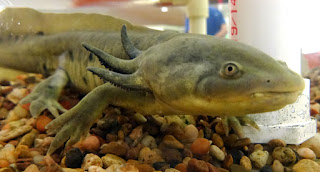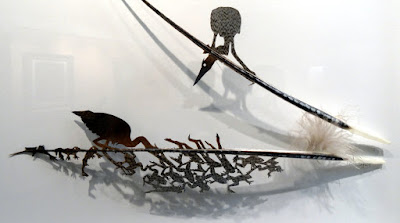We made up for the short hop last time with a long 289.2 mile (93,963.3 total) drive today (Calhan, CO to Hays, KS). It was good to have new tires on the Honda so we did not have to worry about tire problems.
A quarter of our drive was on Highway 24 which was very pleasant. When we connected with I-70 east in Limon, CO, the drive became pretty dull. Such a rapid and complete change from the mountainous Colorado we had come to love. We couldn't even see a hill in any direction. Another thing we hadn't needed in a while was air conditioning but it was exercised today as it warmed up on our drive.
I'm sure not all of Kansas is this flat but all of it we saw today was.
We overnighted at the Walmart in Hays, KS. I unhooked the car so we could do a little outing and fit in the parking slots better. I usually like to clean the bugs off of the front of the coach when we stop, and we had quite a collection when we reached Hays but I decided with the temperature in the mid-90s it could wait.
All the bugs on the front of the coach made me yearn for the somewhat bugless desert.
With the car available we were able to visit the nearby Sternberg Museum of Natural History before it closed. It was part of the ASTC group so our membership made admission free. This was a very nice little museum on the Fort Hays State University Campus. Their signature piece was this very rare fossil of a fish that had just eaten another smaller fish.
This find put George on the international map. "George F. Sternberg was a paleontologist best known for his discovery in Gove County, Kansas of the "fish-within-a-fish" of Xiphactinus audax with a recently eaten Gillicus arcuatus within its stomach." Wiki
Wow, let's be fair, the fossil was discovered by Walter Sorensen of the American Museum of Natural History in Gove County, Kansas, in 1952. Sternberg and his team completed the excavation. (No small feat!)
Mosasaurs, Tylosaurus
Logan County, Kansas
How would you like to have one of these bad boys swoop down on you? Even though this male had a 20-foot wingspan, he weighed just 35 pounds. Interestingly, fossils of females outnumber males 2 to 1.
Pterosaurs: Dragons of the Air
Pteranodon Longiceps
Logan and Trego Counties, Kansas
Of course, we spent a goodly amount of time in the minerals section. They certainly had some nice specimens.
David's favorite.
Calcite (dogtooth spar; orange) with Sphalerite (black)
Elmwood Mine, Smith County, Tennessee
My Favorite.
Barite (spherical snowball, white) with Fluorite (purple) and Sphalerite (black)
Elmwood Mine, Smith County, Tennessee
Megalodon (Carcharocles megalodon), meaning "big tooth," was the top predator fifteen million years ago before going extinct 2 million years ago.
A Zurich study's data shows a 1 percent chance that these giant sharks could still be alive. The Zurich researchers reject that possibility, but it's good enough for the SIFI channel!
Its estimated size, 60 to 80 feet in length, is largely drawn from the size of its teeth because little else has been found. (Jaws in museums are models, not finds.)
No idea what this little guy was other than adorable!
The Herons and the Frog, by Chris M. Maynard, born 1954
turkey feathers on stainless steel pins
Dauntless, by Cynthie Fisher, born 1963
oil
Their collection of rattlesnakes was pretty extensive. There were species from pretty much everywhere in North America. It was interesting just how varied they were.
A bit blurry but the only time I sorta caught some tongue action.
Crotalus molossus, Blacktail Rattlesnake
Amazing how well this guy blends in with the ground.
Crotalus mitchellii, Speckled Rattlesnake
I love the mug on this guy.
Crotalus viridis, prairie rattlesnake
David took these two so I'm not sure I have identified them correctly.
Crotalus ruber, Red Diamond Rattlesnake (maybe)
He captured his eyes so clearly and his snout is so unique I had to include them.
Crotalus ruber, Red Diamond Rattlesnake (maybe)



























No comments:
Post a Comment